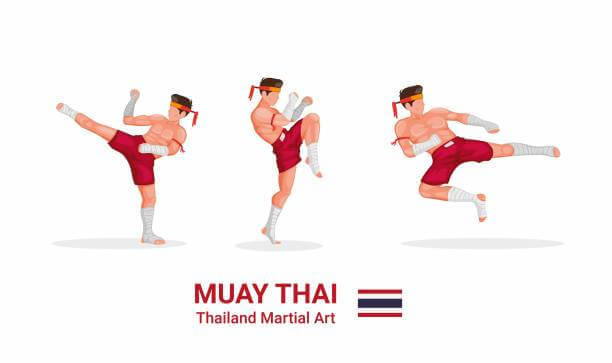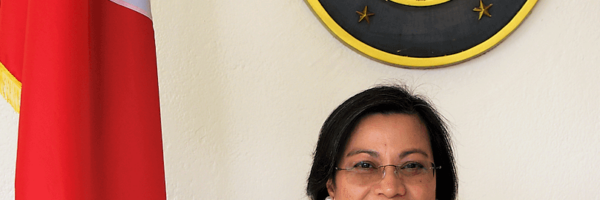
The love of Muay Thai
It is not inaccurate to say that I’ve always considered myself a lover of knowledge and have taken great enjoyment in adventures and new experiences in the hope of finding some wisdom and a greater meaning to life. So, it wasn’t a great surprise for me to take pleasure in a label that a treasured being bestowed upon me, declaring that I am a ‘researcher by nature’, which I took to heart, and even after many years, still feel proud of.
Therefore, when invited, I naturally agreed to an invitation to attend a Thai boxing event, a domain which was completely new and unfamiliar to me. I have to admit I’ve always considered this whole business of fighting very confusing and appalling; I never could comprehend why someone would want to deliberately hurt another, let alone put themselves in a position so exposed to be hurt badly as well. It was just beyond my comprehension. Sure, I’ve watched the movie ‘Fight Club’, and enjoyed it too, but only to the extent that the characters were unusual – a trait I found most appealing in humans – and the plot intriguing. So, I rushed at the opportunity to witness such a foreign experience, and I prepared myself to observe what all the commotion was about.
Muay Thai is very big in Thailand, and some people dedicate – or are obliged to dedicate – their lives to fighting, starting at an early age and making it a primary source of income and pride for themselves and their families. They see it as an art form, and the business of teaching it to foreigners has grown exponentially over the years, attracting interested candidates from all over the world to train and fight, or just to witness it as spectators. Now, I was about to partake as the latter, a leisurely activity on the island of Phuket, where thousands of the local Baht currency are spent to witness these events.
We arrived at the stadium on the night of the fights, and I was privileged to be led backstage by the boxing gym manager. This gym had two of their trainees fight, and the manager of the gym, my friend, was there to support his fighters. The fighters were getting ready; their coaches massaging them, speaking encouraging words into their half-focused faces, and dressing them with the appropriate gear.
To my surprise, I saw one of them taking the liberty to pull down his fighter’s shorts, appearing to mess with his private parts. I couldn’t see what was happening so I curiously asked my companion to explain. He said that the fighters all wore a ‘cock-blocker’ made of steel, which was fastened to their bodies with a shoelace in the shape of a T-string. I noticed how tightly the string held on over the fighter’s underwear, between his buttcheeks, and mentioned that it looked like a very uncomfortable thing to have clutched to such a sensitive area of the body. The response came that “it was super uncomfortable, but much more comfortable than knowing that your genitals were exposed during the fight, not to mention the damage that would be sustained, lest the fighter actually received a blow.” I laughed in agreement, partly because I despised the idea of bodily pain and partly because of all the feedback from all the men I’ve met or seen on TV commenting on or reacting to how terrible the pain is when being punched in the testicles.
Then came the actual fights. ‘Great,’ I thought, ‘time for some research’. It started softly with two six-year-old kids. The strange music started playing, which I found fascinating, reminding me of my favourite celebration in Phuket, the Vegetarian Festival. The strangeness of this celebration is attractive and highly intriguing to me. As soon as I heard about it for the first time, I wanted to see what it was all about. I was told that it was like no other festival, and unlike the Buddhist water festivals, which were peaceful and fun, this Chinese festival was far from being anything like those. Apparently, people mutilated themselves in all sorts of violent ways, piercing their flesh, torturing themselves, and spilling blood. Ah, so it is not only in Islam that people shed blood as a means of religious resurrection: a familiar idea to me from the Middle East. Moreover, women didn’t take part in such festivities, “hitting Haidar” as they call it in Arabic, reenacting the martyrdom of their prophet Hussein, where participants would repeatedly slap their foreheads with blades and spill buckets of blood on the streets. I brought my thoughts back to the boxing ring and saw the two 6-year-olds moving in unexpected circles around the ring, touching the ropes, doing some sort of dance before the actual fight. The questions in my head were multiplying by the second and I curiously started asking about the meaning of what they were doing, and I was told that it was part of the opening traditions: they were dancing to show respect to their teacher, and to create protection for themselves and the other fighter.
The fight didn’t last long; the kids punched, the crowds cheered, the bells rang, and finally the parents came to congratulate the children and take endless photos on their smartphones with them, bragging and boasting about the children’s victory to the audiences. Next, it was a couple of girl fighters. “Interesting”, I thought. Being a woman myself, I wanted to study their faces and try to understand why they would want to engage in such masculine activities. Their fighting seemed different than the children’s and it looked like they were dancing together for a while.
I was struck by the smile that one of them had on her face the whole time even while she was the one receiving most of the blows. The other girl had such an aggressive expression on her face, that I couldn’t help but blurt out “I never want to come across that person on the street” to my friend. My friend agreed with a, ‘she’s pretty tough, isn’t she?’ She finished her opponent with a ruthless blow, and I was brought back by my memories to a time when I was a teenager, playing ‘Mortal Combat’ on my desktop at home. ‘Finish him,’ the voice ordered, as I pressed a few buttons on my keyboard, sending a last kick to my digital opponent, and thereby concluding the round. A brief hit of inner satisfaction would come over me, slightly intensified when it was followed by a recorded “Flawless victory” playing through my speakers, as the female character I always chose to play raised her fists in triumph. “Maybe I do actually understand some of this fighting art after all?” I silently investigated my thoughts. But there wasn’t any time for contemplation just yet, for the energy in the boxing stadium was hectic, the noises amplified, and the events were happening at turbo speed.
A few fights followed and I got to learn more about the art of Muay Thai; how the fighters prepare for the fights, their diets and weight control, their methods of training, their postures, etc. Soon, it was time for one of the trainees from my friend’s gym to fight. I was left there to sit alone, as he headed towards the ring, joining the trainers, in case anyone needed his support. I didn’t get to watch much and in an instant, the bell had rung and the fight concluded. I saw everyone moving backstage and I rushed to join them. It had all happened so quickly that I still hadn’t understood what had taken place, and as I approached, my friend informed me that the fighter had been knocked down by his opponent, concluding the fight. But the sweaty fighter was moving around, ignoring people as they asked him to take a moment to relax after his fight, to which he replied that he thought he had spotted his father. No one believed him (his father had not said he would be in the country) and thought that stars and chirping birds were still circling around his head from the blow, that he was only hallucinating. But, to everyone’s surprise, the father actually appeared, having travelled thousands of kilometres, to come and witness the fight that his son had so proudly wanted to take part of, which to his ill-fortune, had only lasted a few minutes. I witnessed all these events and thought to myself how everything was so raw, so real that it left no space for pretence. What I mean to say is that these fights actually show how refined one’s skills are, how intense the training and how high or warranted their confidence. There was no hiding, no faking of strength through bragging; everything was so obvious and clear during the actual fight.
We rushed back to the front of the house to watch the other trainee’s fight. I was informed that it was this guy’s first fight ever, and that at the last minute, the promoters had matched him with someone more experienced than him. There was worry that this new fighter would be outmatched, and that he might be beaten up by his opponent. The fight started and this guy, as new to all this as he was, showed real courage and heart, and fought mercilessly. The other fighter was surprised, and quickly showed courage himself, in trying to bring him down and win the fight. The blows kept coming from both sides, but the resistance from both sides was so strong that neither of them was able to make much progress over the other. They were both being hurt badly, but they were both inflicting much pain on the other too. It was getting more intense. The crowd started cheering: the ones on the left were supporting the red fighter, and the ones on the right were supporting the blue. Soon, the crowd became more excited, the bangs on the metal seats were getting louder and louder. The people were out of their seats, shouting, screaming, the music was barely audible, and the fighters were getting more bruised, more sweaty, more tired by the second. Soon, it was pandemonium, and everything got so immersed in the action, so mingled all together, like buckets of paint of different colours being poured into one giant container. I sat there, not believing what I was witnessing: how could all these people be so worked up over this performance, so taken with the energy of the fighters that it seemed that everyone was taking it so personally. It was as if the audience had a large stake in the outcome – in fact they probably did, an idea still foreign to me at the time – that could directly influence them on the personal level.
And then it hit me: weren’t these spectators behaving in the same way that audiences did during the ancient Roman empire, when gladiators were put in the middle of colossal stadiums to fight criminals, fierce animals, or other gladiators? How much had humanity actually progressed over the last 2000 years? And weren’t the people in this particular stadium being aroused by watching aggression, violence and bloodshed? I couldn’t understand all this, and yet again I thought of the vegetarian festival that takes place in Phuket every October, the violence displayed there and the bloodshed and self-mutilation. All in the name of shifting ill-luck and evil from other worshipers unto themselves, so as to bring good luck to the whole community.
I had stood there, mesmerised by the performances during the vegetarian festival myself, taking in the rituals and festivities, soaking in the strangest music, interested, strangely horrified and bewildered, trying to make sense of it all. I began to question myself: “What was so appealing to me about that ceremony?” and the answer came: “It is my own outlet for aggressive expression through watching others perform it, for the pleasure of my visual and auditory senses.” It’s what Carl Jung referred to as the personality’s shadow; that one has a dark as well as a good side, like the 2 colours of yin and yang, intermingling together, to form one whole entity. “Ah, so you’re not so different from those participating in these types of events after all!” I replied to myself. And then the whole business of martial arts began to make sense to me. An epiphany, like an unwanted lightning bolt crashing into my consciousness. A loud revelation that reverberated in the echoic halls of my mind.



